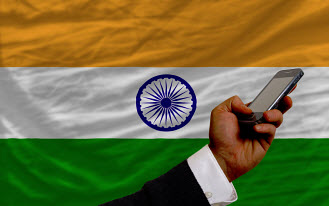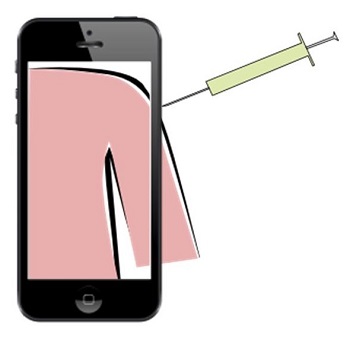BWild |
February 10, 2014
Retail environment of India is beginning to evolve
India’s retail climate is beginning to change. In the past, a common saying among consumers has been “can’t touch, won’t buy,” but the advent of mobile technology is beginning to change the way people feel about purchasing products. As Internet access becomes more common throughout the country, many Indian consumers are beginning to turn to e-commerce for everything they need. As more people get their hands of smartphones and tablets, they are beginning to purchase products using these devices, hence a growing focus in the retail sector on mobile commerce.
E-commerce is experiencing strong growth as consumers become more mobile
India’s e-commerce business grew by 80% in 2013, according to Flipkart, one of the country’s leading e-commerce firms. The company notes that this is the most significant growth e-ecommerce has seen in the country in the past several years. The momentum behind e-commerce is expected to remain strong for the foreseeable future. Notably, many consumers are beginning to purchase products from online retailers with their mobile devices rather than with home computers.
Retailers are focusing more heavily on mobile commerce
Flipkart suggests that consumer mentality is beginning to shift at a rapid pace. People are beginning to feel that mobile commerce represents a more convenient form of shopping. Consumers are not making the move toward mobile shopping on their own of course, as retailers are also beginning to focus more heavily on the mobile crowd. India’s e-commerce market is currently valued at approximately $13 billion and retailers are beginning to see a great deal of potential in the mobile space when it comes to the future of e-commerce.
E-commerce market expected to hit $70 billion by 2020
The e-commerce market in India is expected to reach $70 billion by 2020 as more retailers begin focusing on mobile commerce. Consumers are quickly becoming convinced that mobile payments will have a major role to play in the future of their shopping. It may be some time before mobile becomes the most favored shopping platform in India, however, as many people are likely to remain supportive of traditional, physical stores.
A recent report from MEF has shown that uptake is driving a broad range of activities over this channel.
The Global Consumer Insights Series on Mobile Money has now been released by the MEF, and it has revealed its belief that mobile payments are among the primary drivers in m-commerce as well as the consumption of a broad range of other types of content over that channel.
The report was based on an analysis of data from 13 different countries.
This included the answers to survey questions from approximately 10,000 respondents. This data pointed out a number of global and regional trends in the uptake of mobile payments and the ways in which this adoption was stimulating growth across other areas in this channel. The report showed that last year, 15 percent of users of mobile media had made some kind of digital purchase over a smartphone or tablet.
Wallets were the most popular form of mobile payments that were used by the respondents.
The largest group of those that had used these digital transactions (representing 7 percent of the total number of respondents) had used mobile wallets, particularly those that used NFC technology to verify and complete the transaction.
The research from this report was conducted along with On Device Research. It has underscored the importance of users of smartphone based money to the overall m-commerce marketplace. They pointed out that the individuals who are already using digital transactions over smartphones and tablets are 26 percent more likely to make a purchase over their mobile devices.
Worldwide, a tremendous 91 percent of those digital money users also made some kind of purchase over their gadgets in 2013. Comparatively, among all mobile consumers, 65 percent did the same.
Users of mobile payments are also the ones who spend the largest amounts on individual purchases. In fact, they have a 10 percent lower likelihood of making a purchase of a low value. Moreover, their purchases are 14 percent more likely to be within the mid-value range. That said, they are not only more likely to make more purchases, but they also take part in a broader range of activities over that channel, such as scanning QR codes (12 percent more likely), make a charitable donation (11 percent more likely), or use location based services (10 percent more likely).



